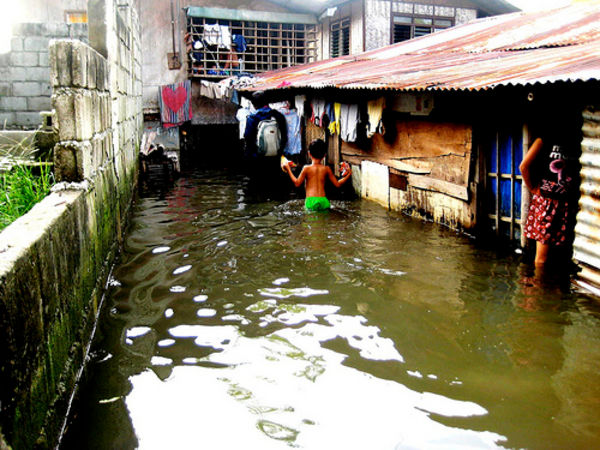

The aftermath of Typhoon Parma
By Adam Preston, KF9, Philippines
We as Kiva lenders want to believe that the borrowers take out their loans in good faith. We want to believe that the Kiva field partners conduct the necessary due diligence to ensure that their clients have ability and determination to succeed. But what happens when everyone is doing the right thing and disaster strikes? Given the natural disaster that recently fell upon the Central and Northern Luzon provinces of the Philippines, what if even the best MFI clients cannot meet their loan obligations? What then?
Last week, I met with Mr. Rolando Victoria (a.k.a Boss Rolly), Executive Director of Alalay sa Kaunlaran (ASKI) to find out what his organization is doing to assist their clients who have been affected by the recent floods. As I walked into his office, he greeted me with a warm smile and offered me a chair. Rolando had just returned from a trip to Northern Luzon, the region hardest hit by Typhoon Parma. He said that one of his main objectives for this past trip was to meet with the branch managers to assess the extent of the damages and to ultimately answer one question: “How can we support [our clients] in their rehabilitative states?”
Making the Necessary Adjustments
Rolando explained that depending on the extent of the damage to the client and their assets there are several courses of action that ASKI can take to support their client’s rehabilitation.
First, for those clients who have only been minimally impacted, ASKI can waive the late payment penalty and other fees that may result from delaying a payment. For those clients whose ability to make payments has been more severely compromised their loan can be restructured. To “restructure” or to modify the loan’s terms is to simply adjust the interest rate or other loan terms to something more favorable to the client.
Another option that ASKI can provide a struggling client is to allow the client to simply take a break from making the payments, or to issue a payment moratorium. This is a more specific type of loan modification where the payment schedule is suspended for a given period of time. In most cases this will allow the borrower to take a break from making payments while they do other things like restore their homes and businesses.
Finally, when the damages are so severe to the borrowers home or business that the borrowers ability to repay the loan has been permanently compromised, the MFI has no other choice but to write off the loan as a loss. This option is of course the least desirable option for the the MFI, but at times, this is the only option.
In talking with Rolando I only got a glimpse of all of the work ASKI does to support their clients in the wake of disaster. As I learned, answering the question of how ASKI can support the rehabilitation of their clients requires a flexible approach, lots of work, and a serious commitment to serving the poor.
Adam Preston is a Kiva Fellow at Alalay sa Kaunlaran, Inc (ASKI), Philippines. Basically, he is just a regular dude who is helping out where he can in the Philippines. Click here to support fundraising borrowers at ASKI!
/>PREVIOUS ARTICLE
Flying is a true educational experience! →NEXT ARTICLE
My first impressions in Cambodia →













